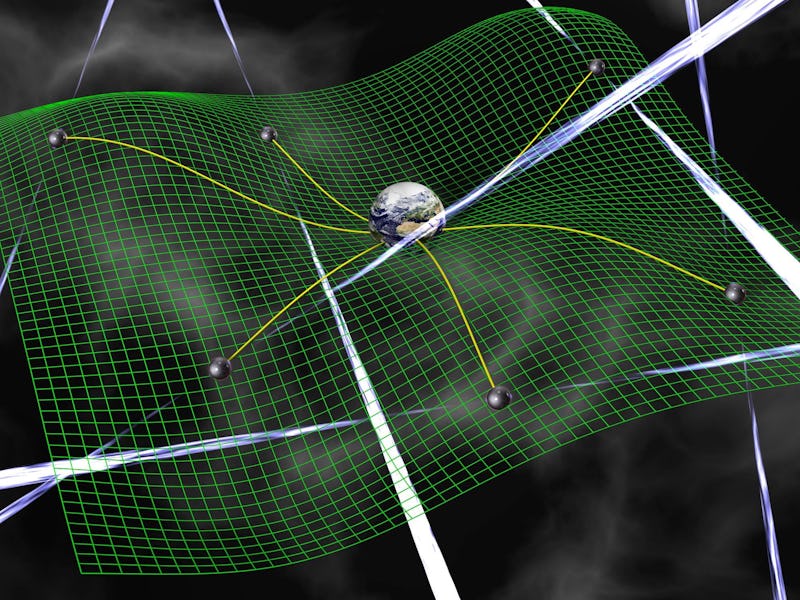Astronomers Are Scanning Gobs of Pulsars to Hunt for Gravitational Waves
Could be a inexpensive alternative for investigating the elusive signals.

When scientists finally detected gravitational waves a few weeks ago, it was an achievement 14 years in the making, using instruments designed to find a signal as tiny as 1/1000 the diameter of a proton. And if we want to continue studying gravitational waves in the future, we’re going to need to find a simpler way to look for them, one that doesn’t require a 4 km-long state of the art instrument.
A new study by researchers at the North American Nanohertz Observatory for Gravitational Waves (NANOGrav suggests we might be able to detect those waves using radio telescopes — you know, the kinds of conventional equipment we use to conduct a ton of astrophysics research already.
The key to this method? The pulsar.
The term is shorthand for pulsating radio star — a highly magnetized neutron star core remnant (post-supernova) that rotates and fires off powerful beams of electromagnetic radiation. The NANOGrav scientists think that if we can monitor a larger number of pulsars across the sky, we can detect low-frequency gravitational waves.
Here’s how that would work. The scientists propose that they can detect low-frequency gravitational waves originating from pairs of supermassive black holes that orbit one another on a gradual collision course. Such black holes affect the space-item fabric around them with faint vibrations that ripple out, as if in water. When these vibrations pass Earth — which takes anywhere from a few months to a year — they cause us to shift ever so slightly in relation to the pulsars of the universe.
Right now, our only hope of finding gravitational waves flying past the Earth is for our ground-based instruments (or even space-based instruments, like eLISA) to pick up those tiny signals and measure them continuously for a long time.
So NANOGrav wants to use pulsars to find these low-frequency gravitational signals. Pulsars — specifically millisecond pulsars — emit radio waves, some of which make it to earth and can be measured using a simple radio telescope.
As it turns out, those pulsars are affected by gravitational waves spat out by supermassive black holes. That, in turn, affects the radio waves those pulsars emit. So measuring shifts in the radio waves is a transitive way to detect the gravitational waves themselves.
The astrophysicists of the new study say we couldn’t rely only on one or a few pulsars to track gravitational waves like this. We’d have to look at an entire web of pulsars. So NANOGrav decided to monitor 54 of these babies.
This new method ditches the need for ultra-expensive, ultra-sensitive equipment in favor of more cost-effective instruments to basically do the same research.
Now, here’s the bad news: so far, the researchers haven’t had any luck actually detecting signals resulting from gravitational waves. They need to add more pulsars to their web.
Still, they aren’t giving up hope.
“Gravitational waves are washing over Earth all the time,” Stephen Taylor, lead author of the paper and a post-doc at NASA’s Jet Propulsion Laboratory, said in a news release. “Given the number of pulsars being observed by NANOGrav and other international teams, we expect to have clear and convincing evidence of low-frequency gravitational waves within the next decade.”